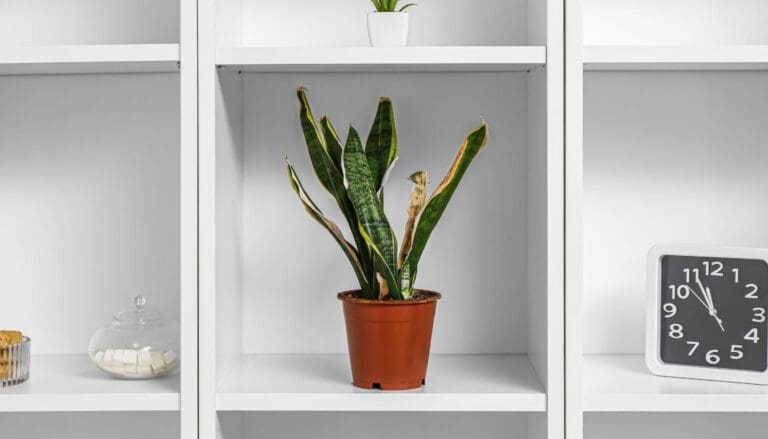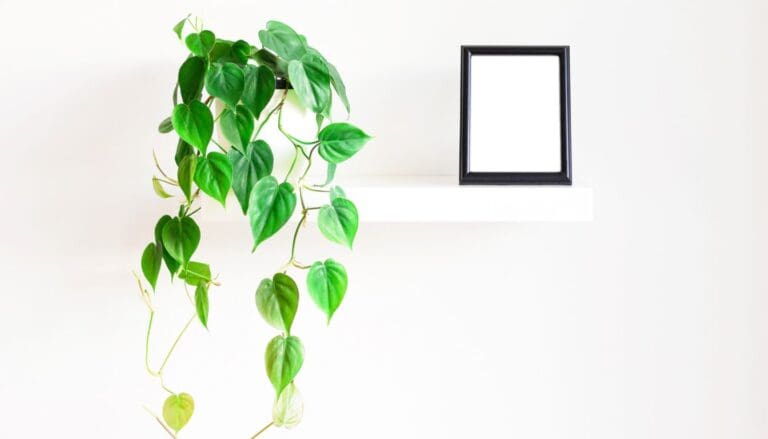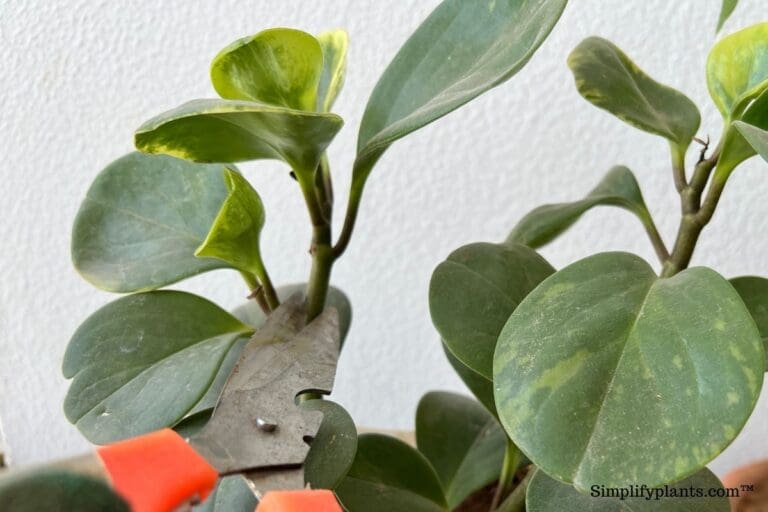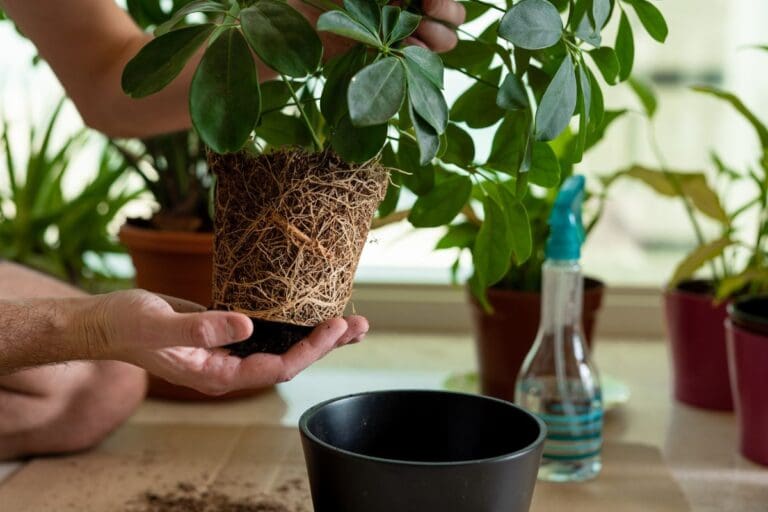Can Crotons Get Too Much Sun? (Sunburn?)
Crotons are tropical plants with bright, vibrant, and colorful leaves. They can be grown outside in warm and humid environments. But you can also have them as houseplants. One common question that comes to everyone’s mind is can crotons get too much sun?
Croton needs 6-8 hours of bright sunlight to maintain their colorful leaves. But if they are exposed to intense sunlight and extreme temperatures, then their leaves will start scorching and curling. If your area receives intense sun, then provide your croton with partial shade during the day.
If you have sunburned crotons that got too much sun, this article will help you understand how to revive the plant and protect it from further sunburn.
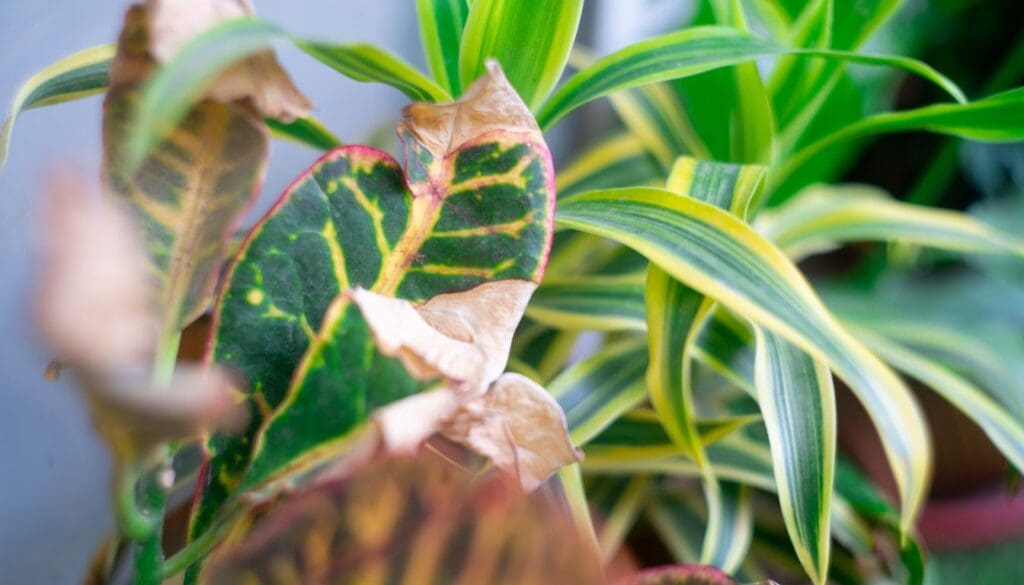
Please note: Simplify Plants is reader-supported. Some links in the post are affiliate links and I get a commission from purchases made through links in the post.
How much sunlight do Crotons require?
Croton plants favor full sun.
However, some species prefer indirect sunlight.
The amount of sunlight that the croton gets will improve the intensity of its color.
To achieve a full, vibrant tone, you should keep the croton in plentiful sunlight.
Can crotons get too much sun?
Most crotons need a lot of light.
The more vibrant the leaves, the more sunlight your crotons will need.
If the leaves on your croton are dark, it’s wise to give it less sunlight, maybe, bright indirect daylight.
If the leaves lose their color and begin to turn green, it means that your croton is not getting enough light.
But at times, some particular colors of the leaves begin to blur.
In that case, it very well may indicate that your croton is getting too much sun, and you should relocate it to a shadier spot.
Signs of sunburn on a Croton plant

More prolonged exposure to direct sunlight can cause scorching or burning of the leaves of the croton plants, turning them yellow or brown.
This can occur in late spring or summer when the croton plants experience the intense sunlight of the hotter months.
Some common signs point out the sunburn in croton plants.
When the leaves go brown or yellow, you should understand that sunburn is the main indication.
Eventually, when the plant is exposed to extreme daylight for a more extended period, it causes tissue damage to the uncovered external layer of the foliage, turning them brown.
This can also result in issues like drooping leaves.
It might even be why the stems get affected in the croton plants.
The afternoon intense sun can also cause sunburn to your dear croton.
How to save sunburned croton?
When you notice the symptoms of sunburn in your croton plant, the next thing for you to do is to try out all the possible ways of saving your croton from any further damage.
Some of the ways which you can try are as follows:
- To begin with, you must remove the damaged leaves as they will not heal or return to their original form ever.
- Promptly move the croton to a shadier spot, away from intense sunlight to prevent further harm.
- Eventually, you can move it back to a sunnier spot, which does not get extreme afternoon sunlight for extended periods.
- If your croton has lost an excessive number of leaves because of sunburn, it will not require much watering like before. Only water the plant when the topsoil dries out.
- It might be best to cut down on fertilizing your plant after it has lost most of the leaves because of the sunburn.
- When the new leaves start to show up, you can steadily increase the dose of the fertilizer.
- Sometimes for croton plants, it is wise to spray water on the foliage in the afternoon to keep the leaves cool, particularly if exposed to the extreme sun. It will likewise hold the plant from burning its leaves.
- If your croton receives dappled sunlight, never change its location abruptly to a bright, sunlit spot, as it will ultimately result in stress and burning leaves.
- Gradually adjust it to more light, in the gap of 5-7 days, to make it used to the increased openness of the sun.
How to prevent sunburn on Croton plants?
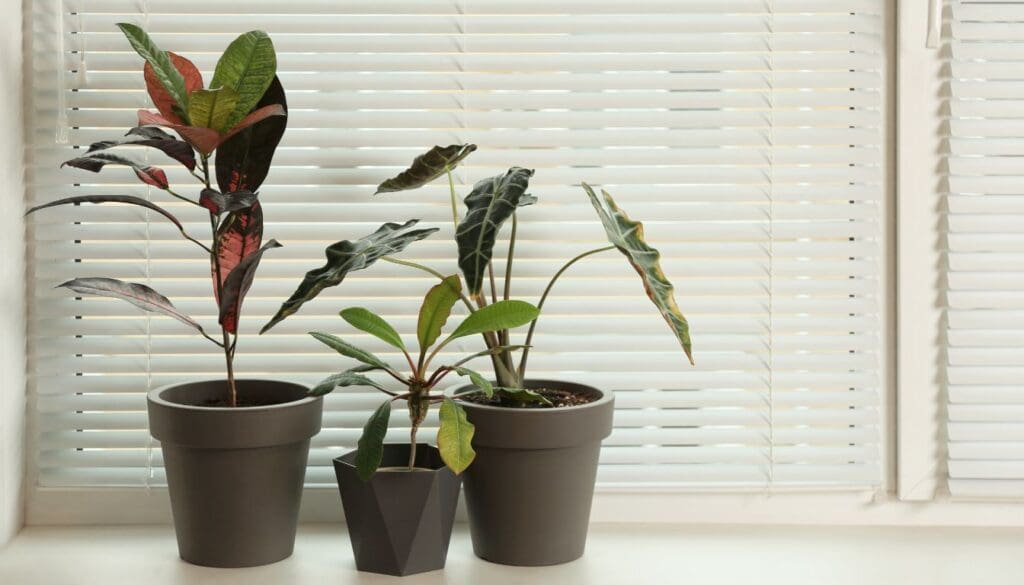
A sunburn is a lot simpler to prevent than to fix.
When the leaves are entirely damaged, all you can do is cut them away and provide support and care to the plant for its new development.
The most effective way to advance sun-resistant leaf development and prevent sunburn harm is to get the croton plant acclimated to the bright sun gradually, also called hardening off.
This process can take around 10-14 days, after which you should prepare your plant to point towards the sun.
You may consider adding shade close to the plant to obstruct the direct sunlight to provide it with the dappled light it needs to develop.
You also need to provide more shade to the croton plant if its leaves develop gray patches.
These gray patches usually indicate that the plant receives too much direct sunlight.
To revive crotons:
- Keep the plants in bright, indirect light.
- Guarantee that the soil is uniformly moist yet well depleting.
- Mist the leaves routinely to establish a humid environment that imitates the humid conditions of the tropical climate.
- Ideally, the croton plant will do its best at temperatures of 68-85℉ but will not flourish in excessive heat.
Care tips for croton
Light: The croton plant will do well in a bright spot, as it requires full sun (4-6 hours per day, if possible) to keep up with its beautiful leaves.
If it fails to get enough sunlight, you might see that the plant has grown leggy with some spare leaves that lack healthy colors or shading.
You can grow croton outdoors if you live in USA zones 9-11.
Always place your croton in a sunny location. The newer leaves might be less colorful if the croton gets too little light.
Water: Croton is one of those spectacular plants that will let you know when they are thirsty.
At some point, when this plant gets thirsty, its leaves will begin to drop drastically.
After sufficient amounts of water and a little bit of waiting, the leaves will rise once more.
Usually, it would help to cut back watering your croton in the winter.
You should water them whenever the soil feels dry.
Remember that you should ensure this plant doesn’t sit in a puddle of water.
To keep away from this situation, you should get a pot with a drainage opening in the base.
If the humidity is low in your house, you should mist the leaves with water once a week. Water the croton plant when the top 25-50% of the soil is dry.
Soil: As the croton plant loves water and a ton of sun, the appropriate soil to use for crotons is rich, saves moisture for an extended period, and contains many nutrients.
Crotons will require soil to help that development over the long haul.
As I said before, crotons are easily shocked, so replacing all the soil frequently is not an intelligent idea.
To enrich the soil, you can blend compost in with the soil.

Fertilizer: As this plant can grow big in a short period, you should fertilize it from time to time.
Fertilizing this plant will assist it with growing faster.
However, you shouldn’t do this more than every 3-4 weeks.
You can continue to fertilize it throughout the winter months, yet not so much as throughout the spring and summer months.
The croton will rest during the winter months, so excess fertilizing will cause more damage than good.
Temperature: The temperature setting for the croton plants is easy because you can put them in a bright spot that should be warm.
Usually, the croton plants prefer temperatures between 65-95 degrees.
You must keep your croton plants away from drafts or cold areas, as they might go into shock.
Humidity: Crotons are tropical plants, and to give these plants the best amount of care, you should try and imitate their native climate, however much you can, i.e., warm and humid.
These plants like humidity.
You can raise the humidity by misting the leaves, setting up a humidifier near the plant, or adding a pebble tray.
Pruning: You should prune your croton plant to eliminate damaged parts of the plant or to keep them in shape.
You should cut back the dead leaves or branches and the overgrown ones just above a node or leaf set.
Try not to remove more than ⅓ of the stem height at one time. Before pruning once more, you should allow the plant to grow more.
Repotting: While picking a pot for your croton, remember that the plant will grow upright, which in the long run might make it unbalanced.
Pick a pot that will not tip over when the croton gets bigger.
You should repot the plant in the spring if it has grown too big for its current pot.
Final words

Crotons enjoy full sun, but too much intense sunlight can cause sunburn and scorch the leaves of your crotons. If you have sunburned croton, relocate it to a shadier spot and prune the damaged leaves.
Allow the plant some time to recover from the sunburn. Ensure that you are not exposing the plant to direct, intense sunlight for too long to prevent sunburn again.
However, don’t keep the croton in low light as these plants prefer direct and bright indirect sunlight.
FAQs
While dealing with sunburned croton plants, people have lots of questions. I have tried to respond to some of the questions related to sunburn on crotons.
How to revive a sunburnt croton plant?
The best thing to do with the sunburnt croton is to cut off its damaged leaves and give as much water as necessary to prevent further damage.
Regular, thorough watering alongside a week-by-week use of a seaweed tonic (not one containing any fertilizer) assists the croton plants with recovering.
Can croton handle direct sun?
Some croton species can be sensitive to direct sun. Some love direct sunlight but not too much because that can result in subsequent sunburning of the plant.
When you provide the ideal growing conditions, they look stunning. I have mentioned some care tips in this article to help you take better care of your croton.
Reference: Sciencedirect, Wikipedia, Wikipedia, Britannica, CABI, Academia, University of South Florida, The University of Georgia.
Recommended Garden Supplies
| Product Image | Our Recommended Gardening Supplies | Check Offers! |
|---|---|---|
Top Top
Top
Top
Top
Top
Top
Top
Top | rePotme Houseplant and Tropical Classic Potting Soil Mix | Check Offer On Amazon |
 Top
Top
Top
Top
Top
Top
Top
Top | Espoma Organic Indoor Plant Food | Check Offer On Amazon |
 Top
Top
Top
Top
Top
Top
Top
Top | GooingTop LED Grow Light 6000K Full Spectrum Clip Plant Growing Lamp | Check Offer On Amazon |
 Top
Top
Top
Top
Top
Top
Top
Top | Soil Moisture Meter | Check Offer On Amazon |
 Top
Top
Top
Top
Top
Top
Top
Top | Govee Hygrometer Thermometer, Bluetooth Enabled! | Check Offer On Amazon |
 Top
Top | LEVOIT Humidifiers for Large Room(Best For Plants) | Check Offer On Amazon |
 Top
Top
Top
Top
Top
Top
Top
Top | Upgraded DIY Automatic Drip Irrigation Kit, 15 Potted Houseplants Support | Check Offer On Amazon |
 Top
Top
Top
Top
Top
Top
Top
Top | Stainless Steel Heavy Duty Gardening Tool Set | Check Offer On Amazon |
 Top
Top
Top
Top
Top
Top
Top
Top | Bonide Insecticidal Soap | Check Offer On Amazon |
 Top
Top
Top
Top
Top
Top
Top
Top | Bonide 32 oz Spray Neem Oil for Organic Gardening | Check Offer On Amazon |
 Top
Top
Top
Top
Top
Top
Top
Top | Garden Safe Fungicide | Check Offer On Amazon |

